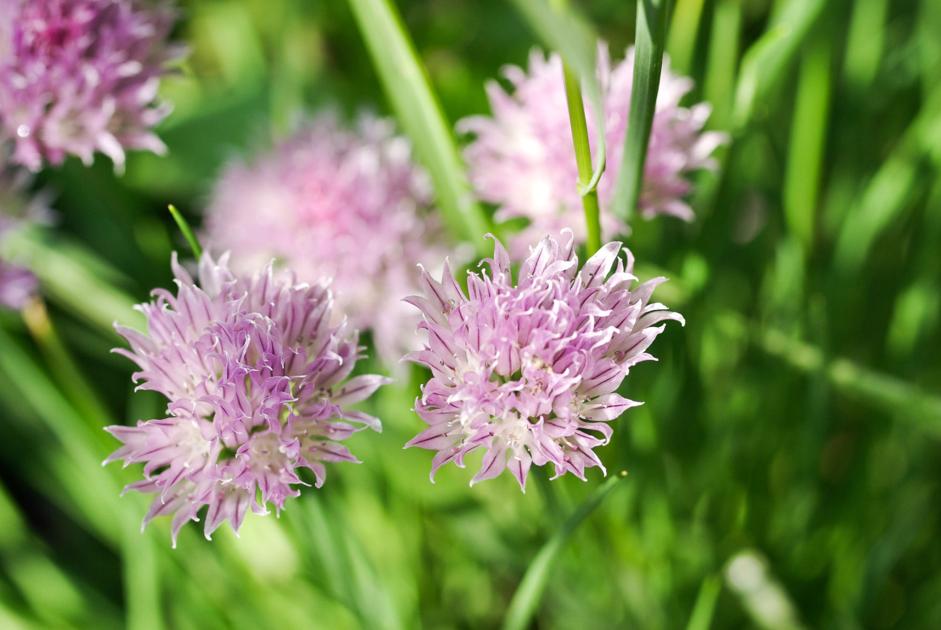
For several months now, most of us have been cooking at home far more than usual. Fresh herbs are one of the best ways to perk up your cooking, and the freshest herbs are the ones you cut from your own garden seconds before using them.
While some herbs like basil, cilantro and dill are annuals, to plant and use within a single season, many are perennial plants that will thrive in your garden all year.
Perennial herbs are a great way to fill a sunny space in your garden and add interest to your cooking year round. Most are hardy, easy to care for, and ornamental in the garden. Many can even be grown in pots on a windowsill.
Depending on your garden space, you can grow herbs directly in the ground, individually in containers, or gathered together in a planter.
The important considerations are making sure they get as much sun as possible, are somewhere you can reach to water and harvest, and are convenient to your kitchen.
Having a pot of thyme just outside the kitchen door makes it much more likely to get used than if you have to trek all the way out to the main vegetable garden.
While Mediterranean herbs are adapted to heat and periods of drought, full sun with regular watering will produce the healthiest, least stressed plants. Water thoroughly but let the soil dry between waterings.
Depending on how much you cut for your cooking, you might need to give your plants a hard pruning during the growing season.
Shortly after flowering is a good time for a heavy shearing, which removes the spent flowers and results in a flush of new growth. If you have a more formal style of garden, like an English knot garden, many herbs can be trimmed into formal topiary shapes.
As with most woody shrubs, make sure you only prune down to green leaves and not to bare wood to guarantee regrowth.
Here are some of the most commonly used and reliable perennial herbs:
Sage (Salvia officianalis)
Culinary sage is extremely drought tolerant and easy to grow. Leaves can be picked for use year round or dried for storage, it takes hard pruning very well, and the June flowers are popular with pollinators.
Rosemary (Salvia rosmarinus, recently changed from Rosmarinus officinalis)
Rosemary is a beautiful evergreen shrub with pink or purple flowers. It can be pruned into tidy shapes or allowed to sprawl in the garden. Rosemary can be killed by a hard winter especially when young.
Bay (Laurus nobilis)
Sweet bay is a beautiful centerpiece to an herb garden. While only partially hardy in our climate, if protected during harsh winters it can grow into a lush tree or shrub that is also amenable to hard pruning and shaping.
Its flavor is different from the commonly available California bay (Umbellularia californica). Fresh bay leaves are far more fragrant than dried, and are wonderful in bean soups or stuffed under the skin of a roast chicken.
Thyme (Thymus spp.)
Thyme is another indispensable herb for many kinds of cooking, and does very well in pots. The most commonly grown culinary thyme is English thyme (Thymus vulgaris), but you can also grow lemon thyme or lime thyme (Thymus x citriodorus), or purely ornamental varieties like creeping thyme.
Oregano (Origanum spp.)
The earthy flavor of this creeping perennial complements foods from pizza sauce to grilled steak to Mexican pot beans, but it spreads and self sows enthusiastically in the garden. Many varieties are available, including Mexican oregano, Italian oregano, and marjoram.
Mint (Mentha spp.)
In the huge mint family, spearmint (Mentha spicata) is one of the most commonly grown, and is suitable for many different kinds of culinary use, including ice cream, drinks, or salads like tabouli. Peppermint (Mentha x piperita) has a sharper flavor and is more commonly used for tea and candy.
Then there is a wide range of other flavors like chocolate, orange, or pineapple mint. Lemon balm (Melissa officinalis) is a plant in the mint family with a strong citronella-like scent. All mints are aggressive growers, especially in moist soil, and can easily take over a garden bed, so containers are recommended.
Parsley (Petroselinum crispum)
Parsley is a kitchen staple and it’s incredibly convenient to have a supply always available in the garden. Unlike most other culinary herbs, parsley is a biennial, which means it grows leaves its first year after germination, then blooms the second year. So if you plant seeds or starts in the spring, you can harvest leaves throughout the first year and into the winter.
Chives (Allium schoenoprasum)
Chives typically die back in the winter and resprout in early spring. Leaves can be clipped for cooking throughout the growing season, but are best when picked young. Showy pink flowers appear in May, and are also edible.
Lavender (Lavandula spp.)
While not as widely used in cooking as other herbs on this list, this sturdy evergreen plant is a stalwart of the sunny garden. The fragrant flowers can be used in potpourri and soap, but also mixed with other herbs to create the culinary blend Herbes de Provence. It might also be used in cookies or ice cream.
Depending on your culinary preferences, you might also enjoy growing herbs like tarragon, fennel, horseradish, or lovage. The possibilities in the garden and in the kitchen are endless.
The Link LonkAugust 07, 2020 at 07:00PM
https://ift.tt/33HGRLX
Ask the Master Gardener — Perennial herbs: endless possibilities from the garden to the kitchen - goskagit.com
https://ift.tt/3eCf9lu
Herb
No comments:
Post a Comment